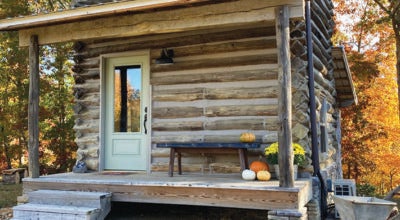Lowery family descendants looking into rare disease
Published 9:33 am Thursday, January 11, 2018
By Michael Lowery
Special to the Enterprise
I am a descendant of Elijah Lowery, (1820-1901) Alberine “Alley” Lowery (1851-1922) and Wesley Lowery (1893-1983).
This branch of the Lowerys moved into Yadkin and Davie counties from Halifax County, Va., and their ancestors crossed the Atlantic from England and Ireland. The early ancestors in Halifax were John Lowery and his wife Catherine B. Whiting.
Some of the children of Elijah Lowery that settled in the Davie Country area are: James A. Lowery, Mary Elizabeth “Bella” Lowery and Adlissee Monday. Many of them and nearby relatives are buried in the church cemetery at Pino.
Down through this local family tree passed a rare form of Muscular Dystrophy called Limb Girdle Muscular Dystrophy 1D or as it is commonly known, LGMD1d. It is hereditary but sometimes skips a generation.
Limb-girdle muscular dystrophy is in fact not one single condition but a number of inherited muscular dystrophies that are grouped under the label “limb girdle” because they generally affect the pelvic and shoulder girdles, causing weakness in the muscles in the top part of the arms and shoulders and the hips and thighs. These muscles are often called the “proximal” muscles because they are nearest to the body. The weakness usually affects the legs first, followed by the arms.
My dad was hit with LGMD at the age of 35, his father, my grandad Wesley, at about 50. They had difficulty walking, climbing stairs, and toward the end were confined to wheelchairs. Later on, they were vulnerable to strokes and cardiovascular disease. My dad’s brother, Eugene, and his two of his three children were also afflicted.
Historically, there has been no treatment for this cruel and crippling condition. With the advent of gene editing, it may be possible, with further research and clinical trials, to use a new technique, CRSPR to edit the defective genes so that individuals do not develop LGMD and don’t pass it along down the family tree.
It is possible, even likely, that the female descendants of Elijah Lowery and other Lowerys intermarried into other family names and that other residents of Davie, western North Carolina, and southern Virgina may also have been hit by LGMD or variants. A study is underway by several researchers to identify affected individuals, develop a clinical trial, and move forward developing a potential cure. The test for the disease is a simple DNA swab provided free of charge by the researchers.
My brother, Dr. William S. Lowery, who is also afflicted, has set up a website (http://www.lgmd1d.org) and Facebook page (@LMGD.1D) to communicate with individuals that may have the disease. Information gathered will be kept confidential.
Because this is such a rare disease and the genealogy of the spread is so important to the research, any individuals that can be located are critical to finding a cure.





